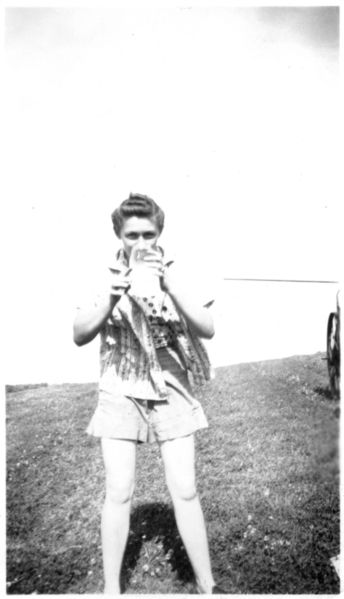
Girl drinking milk straight from jug, standing in yard. Appears 1940s.
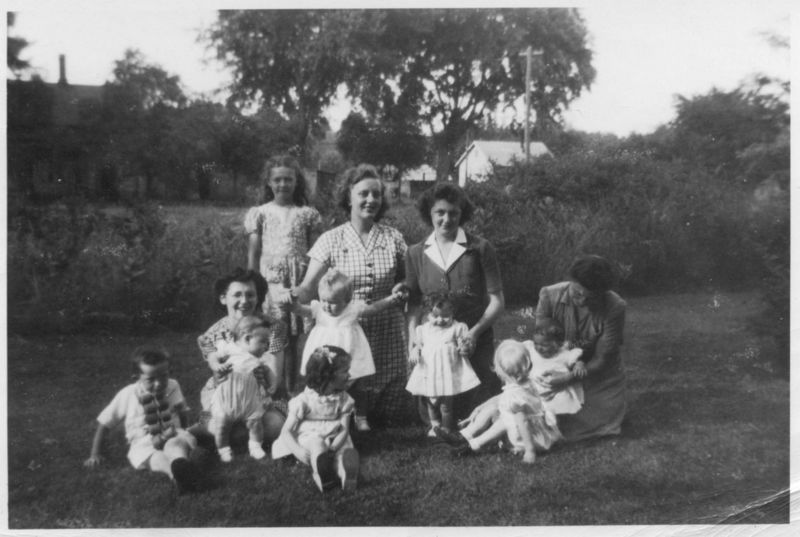
This is why more than 2 babies are rarely photographed together; harder than herding cats. Dated by photo lab “Jul 19 1945”, Brown Photo Service, Minneapolis, MN.
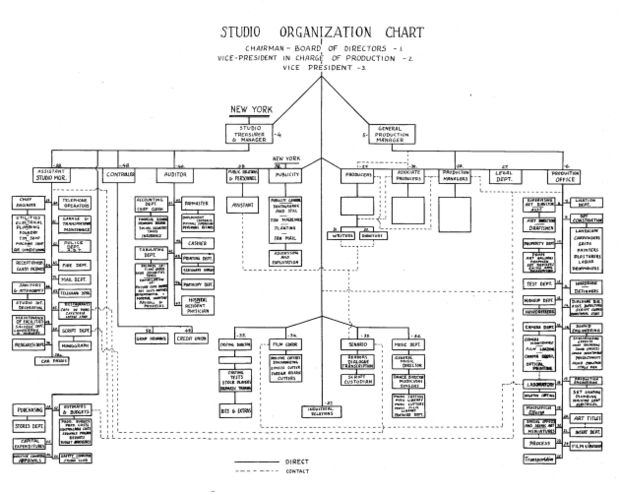 In 1940, this is how 20th Century Fox looked like, when diagrammed out on paper. These sheets — 38 of them — outline nearly every part of studio operation, from the restaurants to the sound effects to the studio security. The extreme detail is absorbing, looking at every little box and seeing where it leads to. Some are less than informative, while others explain a lot about how movies made it to the public.
In 1940, this is how 20th Century Fox looked like, when diagrammed out on paper. These sheets — 38 of them — outline nearly every part of studio operation, from the restaurants to the sound effects to the studio security. The extreme detail is absorbing, looking at every little box and seeing where it leads to. Some are less than informative, while others explain a lot about how movies made it to the public.
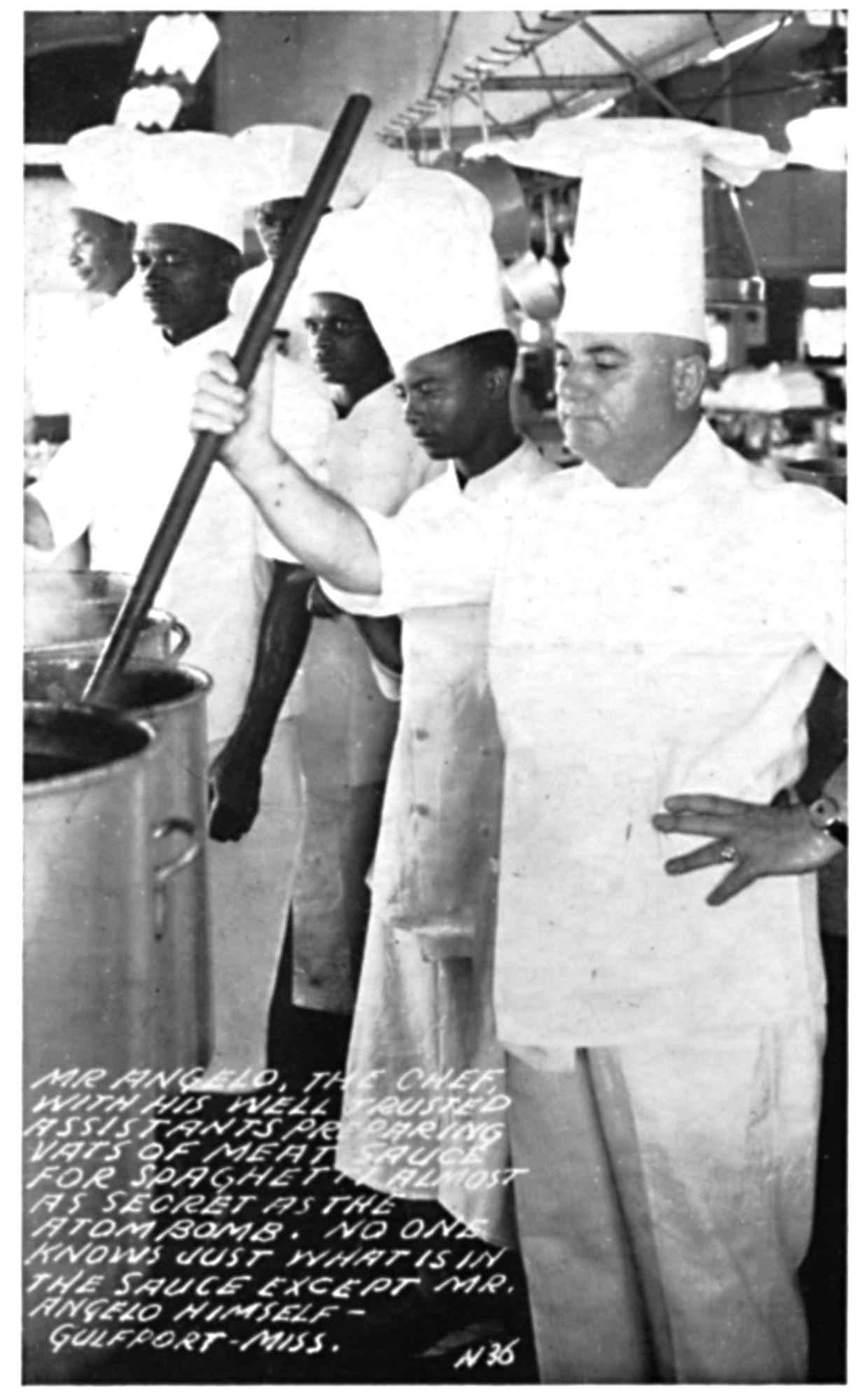 We’ve met Angelo before, a young immigrant who made himself a celebrity chef in the 1930s. In this postcard, a Mr. has been added as a sign of professional respect, but also in a style my wife has seen used in Greek restaurants — “Mr” being formal, but the use of the first name being more casual and inviting from someone whose food you trust enough to eat.
We’ve met Angelo before, a young immigrant who made himself a celebrity chef in the 1930s. In this postcard, a Mr. has been added as a sign of professional respect, but also in a style my wife has seen used in Greek restaurants — “Mr” being formal, but the use of the first name being more casual and inviting from someone whose food you trust enough to eat.
By the time this postcard was created, his fame and power had reached a world-shattering degree: the caption states that his recipe for spaghetti meat-sauce was “almost as secret as the atom bomb.” Note that it doesn’t use the Bomb as a comparison for quality of strength (although I’m sure, in modern terms, it was ‘da bomb’), but instead comparing to the secret. This helps place the age of the post card a bit better: I’d previously figured this was 1940s, and since the postcard alludes that the atom bomb (first tested in 1945) was still considered a hidden secret known to only the U.S., this postcard may be from as late as 1950 but probably not much after.
I also must remark (probably in the naivetie of a Northerner) that I am impressed both postcards show Angelo’s staff to be composed entirely of Black chefs. While they’re referred to as ‘assistants,’ in the cooking world where the chef whose name is on the sign over the door is par to a king in a restaurant kitchen it’s still quite a title. For his assistants be used as a key portion of the restaurant’s advertising, both in the photo and referenced in the text on both cards, must show Angelo saw the importance of his staff both in the kitchen and to the rest of the world, rather than devaluing them as just the negro help.
In the 1940s, Salvador Dali and Philippe Halsman teamed up and produced a number of surrealistic works of photographic art — some are iconic, like In Voluptas Mors and Dali Atomicus, but the pair produced many different photos during their collaboration. Others, like this one (I was unable to find its title) and Midsummer Night’s Mare, made it to film but did not achieve the acclaim that Mors and Atomicus did. It’s easy to forget, when seeing the final results of such a mixing of the minds, that great art isn’t a coincidence or a singular act — producing art requires practice, numerous mistakes, and attention to detail that makes the final product look effortless. The Fall 1950 issue of Photography Workshop stripped away a veneer of that pseudo- effortlessness. In an extensive article about Halsman, they included four ‘outtakes’ from Atomicus, the unnamed photo above, and another unnamed photo I could find no other source for:
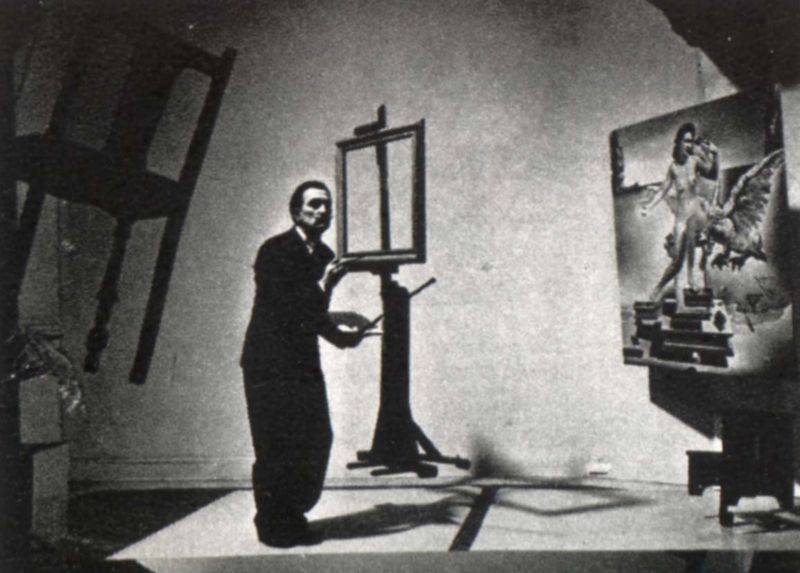
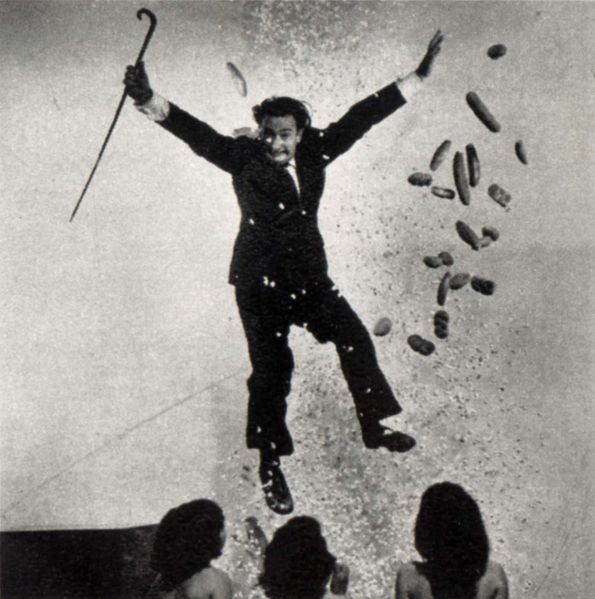
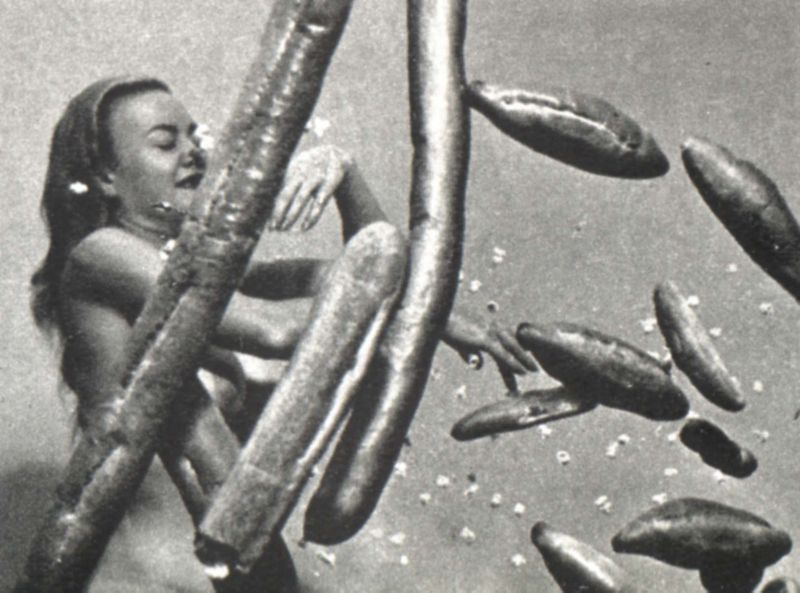
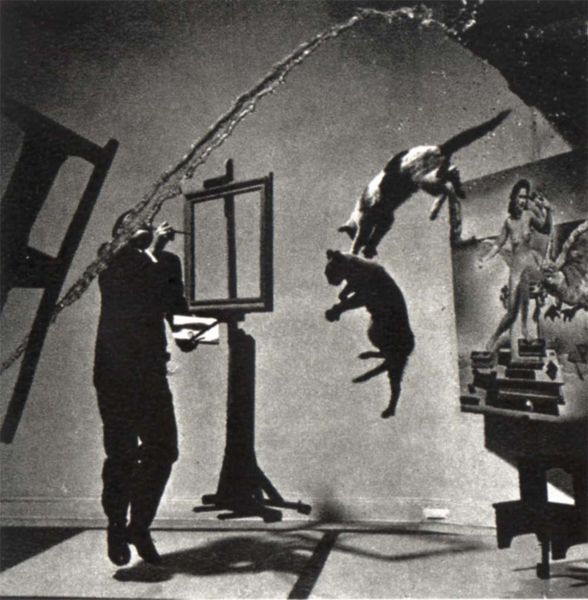
The Atomicus photo, the most famous of the Halsman/Dali colaborration, took 28 takes — “after each exposure, while the assistants mopped the floor and reclaimed cats, Halsman developed the film to see the progress in the composition. Accidents would happen. The water, intended for the cats, would cover Dali’s face instead.”
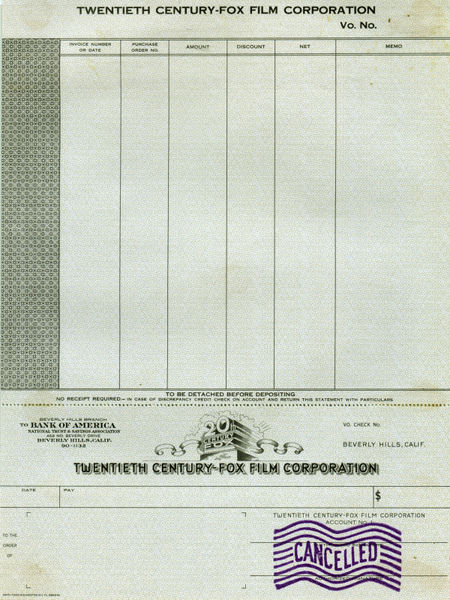 |
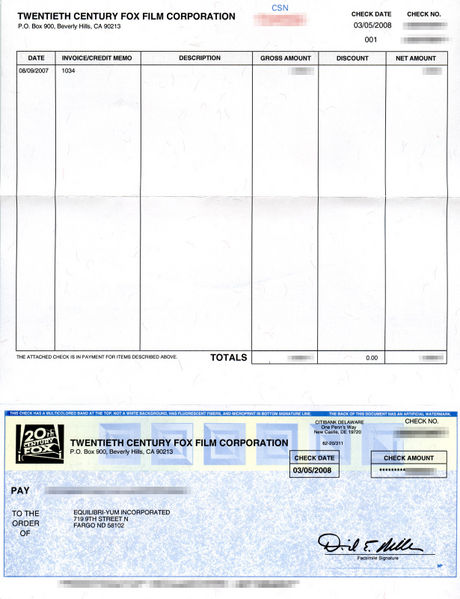 |
On the left, a 20th Century Fox check from sixty years ago, purchased (along with 15 more pounds of 20th Century Fox ephemera from the early forties) by my wife and I for a lot of money, on the assumption we could re-sell it for a whole lot more than we paid. We’ve had an appraiser say it could have been worth more than a thousand dollars, were we to find the right buyer.
Before a buyer found us, 20th Century Fox’s legal department found us. See, the large book of Fox ephemera was lent by Fox to the University of Southern California…and was stolen from the university’s library. Allegedly, entirely according to what the Fox lawyer told us on the phone. Rather than calling the police and having us hauled in for trafficking stolen materials, one of Fox’s lawyers contacted us, asked us to take the paper off the market, and offered to pay us what we spent in acquiring it in the first place. A reasonable deal; we could have argued to keep it, we could have gone to court, Fox would have had to figure out how to prove that this book was the one stolen, we’d prove our ownership and the unlikeliness that it ever belonged to 20th Century Fox…but we thought it better to cut our losses.
In the mail today arrived the check on the right — a modern 20th Century Fox check reimbursing us for our expenses in holding on to this lot for Fox until UPS delivers it sometime next week. As the issue is ownership, and not protection of intellectual property, I took some scans of the cooler aspects of the lot before I ship it out in the next couple days. You’ll get to see some of it soon.
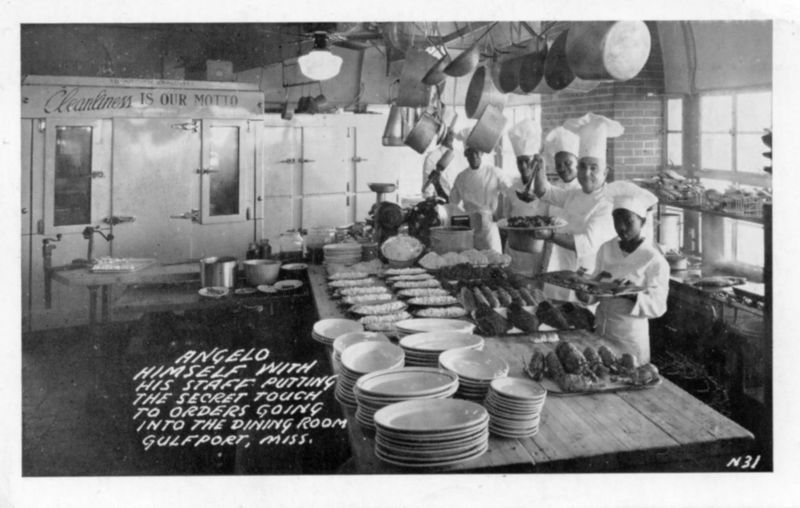
The postcard assumes you know who Angelo is — this fine chef was so ubiquitous that his first name was enough to tell all who he is. Emeril? Bah — television was his tool…Angelo was known by word-of-mouth! This postcard is done in the style of real-photo postcards from the 1910s to 1930s, but appears to have been printed much later (and it’s not actually a photographic copy). Angelo Xidis immigrated as a teen in 1915, opening his eponymous restaurant in 1935. This would seem to be about the right time for this photo, maybe 1940s. Sadly, Angelo’s closed in the 1980s, well after the original Angelo retired, but the restaurant lives on in the numerous postcards that recommended his restaurant to the friends and relatives of a multitude of Mississippi vacationers.
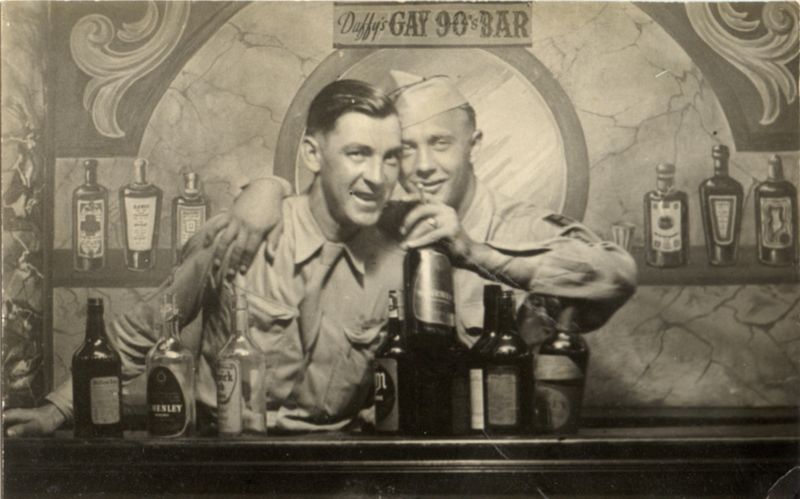 The back of this postcard says it was taken in Coney Island, so I doubt there was a real Duffy’s Gay Nineties — just a painted backdrop for fun-seekers to get a photo to mail back home. These two guys, on leave from the Army in 1946, seem to be enjoying themselves. The guy on the left has a single chevron, identifying him as private. The guy on the right, while blurry, still has a clear enough view of his unit patch: 1st Army. The guy on the right has some tell-tales in that hand, too (besides the bottle): on his ring-finger is a wedding ring, and between his fingers, a cigarette. The war was over, his best gal was waiting for him back home, and he got to live it up at Coney Island once in a while – he had no complaints.
The back of this postcard says it was taken in Coney Island, so I doubt there was a real Duffy’s Gay Nineties — just a painted backdrop for fun-seekers to get a photo to mail back home. These two guys, on leave from the Army in 1946, seem to be enjoying themselves. The guy on the left has a single chevron, identifying him as private. The guy on the right, while blurry, still has a clear enough view of his unit patch: 1st Army. The guy on the right has some tell-tales in that hand, too (besides the bottle): on his ring-finger is a wedding ring, and between his fingers, a cigarette. The war was over, his best gal was waiting for him back home, and he got to live it up at Coney Island once in a while – he had no complaints.